How can you increase the visibility of an already technically well-optimised website in Google by more than 100%? The answer is to merge technical SEO with content marketing in the form of high-performance content formats (HPCFs). This article explains what HPCFs are. By the end of the article, where you will find a list of further examples, you will know how to take a website’s SEO to a whole new level and massively increase its visibility.
- Technical SEO has reached its limits
- Only 3% of all content campaigns work
- Study: What distinguishes successful websites from less successful websites?
- 1. Brand
- 2. Quantity Content (mass)
- 3. High-performance content formats (HPCFs)
- What is a content format?
- Why is the content format important?
- Content formats make content marketing scalable
- What are high-performance content formats?
- Why are high-performance content formats so important for SEO success?
- Examples of high-performance content formats
- Example 1: Greenmatch https://www.greenmatch.co.uk/solar-energy/
- Example 2 - Jacksons fencing
- Additional HPCF examples
- How can I use high-performance content formats for my daily SEO work?
Technical SEO has reached its limits
Let’s face it, you can’t build much of a competitive advantage with technical SEO these days. Experienced SEOs have known this for a long time, but beginners are often not aware of this reality. Information about technical SEO is widespread and freely available. Technical SEO is the mandatory programme that is evaluated by Google when producing the top 10 rankings on the first search results page. No more and no less.
The real edge over your competitors is to be gained via successful content marketing. In the end, the content must satisfy the user’s search intention. If this is not the case, a page will quickly fall out of the top 10 search results. A site that has been technically perfectly optimised will not be successful if the content fails to satisfy site visitors. With a technically well-optimised website, significant growth is therefore mainly achieved through successful content marketing.
To illustrate this, we can think of a website as a rocket. Technical SEO has the task of optimising the website system and putting the rocket into an airworthy condition. How high the rocket climbs and whether it even manages to leave orbit, however, depends on the fuel. The fuel is the content.
Even the best rocket won’t take off without fuel. Content is the decisive factor in whether a functioning rocket makes just a small hop or flies all the way to Mars. The content makes the difference with regard to whether a website ranks for 10, 10,000 or 100,000 keywords – and how well it ranks for those keywords. Unfortunately, however, users’ content requirements are a black box until we shed light on the darkness.
Only 3% of all content campaigns work
Larry Kim reported in his keynote address at SMX 2018 in Munich that only about 3% of all content campaigns work (unicorns), which means that a whopping 97% fail (donkeys). Obviously, content has to have certain characteristics to be suitable as fuel for our rocket.
Since we do not want to settle for a success rate of 3%, we have to investigate the characteristics that lead to success in the SEO channel.
So far, no suitable methodology has been established to systematically conduct such an analysis. The concept of HPCF can close this gap.
Study: What distinguishes successful websites from less successful websites?
We analysed hundreds of domains in a study to find out what distinguishes websites with strong SEO growth and high visibility from less successful domains. This included the domains from our list of SEO winners and SEO newcomers , all of which are domains that have enjoyed exorbitant SEO growth. The study also looked at already established domains from the SISTRIX Top 100. What makes these websites so successful?
The result is three outstanding success factors.
1. Brand
Brands are searched for, clicked on more often (receive a higher CTR) and enjoy more trust amongst users. For really big brands, the search volume for their own brand is enough to build up considerable visibility on Google. Even with mediocre SEO, some big brands manage to beat their lower-profile competitors. The more successful the brand, the greater the effectiveness of the SEO work.
2. Quantity Content (mass)
A lot of content helps a lot, but as an individual success factor it is of limited effectiveness. If a website has a mass of (good) content, it can still achieve high visibility even with poor ranking performance. A few pieces of content make it to the first search results page on Google, and with hundreds of thousands or even several million pages, this can add up to a considerable amount.
It is quite clear that pure mass has been losing importance as a success factor for years. Without sufficient content quality, the ranking performance and thus the visibility continues to decline over time, as the following graphic shows using the example of the huge directory at forbes.com/
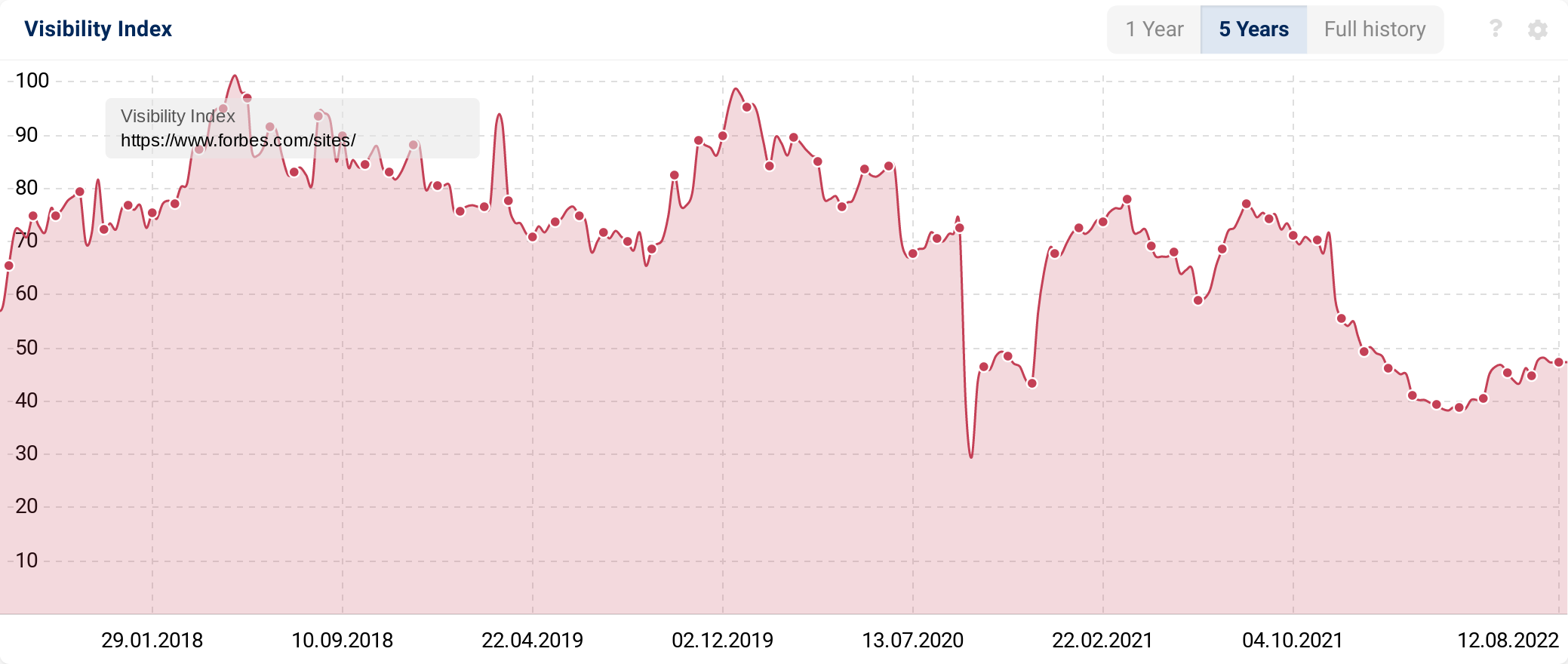
3. High-performance content formats (HPCFs)
The third success factor is high-performance content formats, which can be found on almost all the websites that have above-average success. They break out of SEO boundaries and enable exceptional SEO efficiency and growth.
We are no longer talking about growth rates of 10 or 20% a year. With HPCF, increases in visibility of 100%, 200% or even 500% are possible – even for websites that are already technically well optimised.
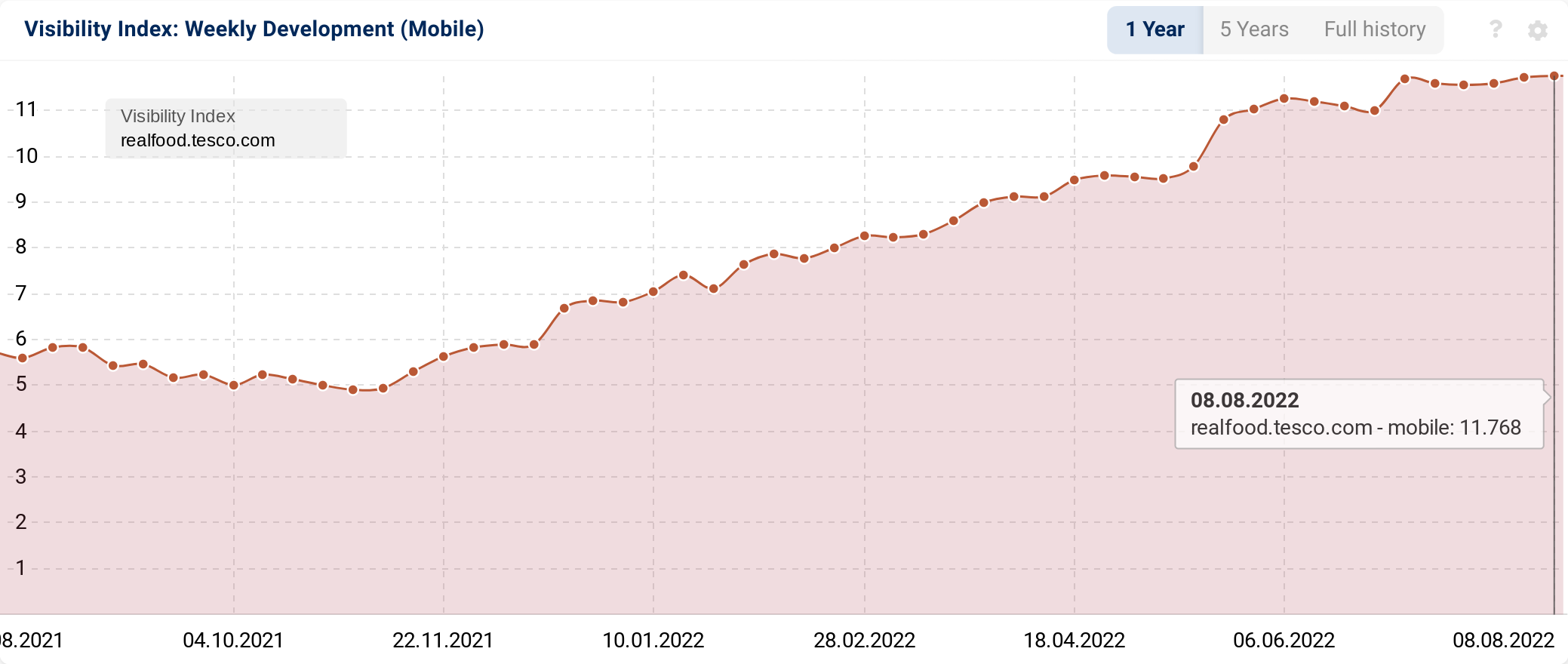
What exactly are HPCFs though? To explain, let’s first look at the component ‘content format’, so that we can then talk about high-performance content formats.
What is a content format?
The term content format describes the definition and design of website content. It is not only the content that is considered, but also the framework into which it is integrated. An essential component of the framework is the template.
Different content formats are blog posts, product pages, category pages, guidebook pages, glossary pages, topic pages, news articles and recipes. These then differ again in terms of their specific design.
The combined consideration of content and framework is indispensable because it combines content marketing and technical SEO. This is the only way to achieve a successful overall package. If we stick to our analogy with the rocket, the rocket and the fuel must be coordinated with one another. Without a functioning rocket, even the best fuel will not fly independently and vice versa. We need both.
A website usually consists of different content formats. For example, it has a blog, a shop and a forum. In most cases, the content formats are located in different directories and can, therefore, be analysed separately.
Why is the content format important?
As a blueprint, the content format defines many ranking factors, e.g.
- Content concept
- Basic suitability for satisfying the user’s intention
- The template used
- System of internal linking
- Structuring of the content
- Focus
- Multimedia formats. e.g. text, video, images
- Production effort
Let’s just look at the point regarding basic suitability for satisfying the user’s intention. Here, the prominent role of the content format becomes immediately clear. If the search intention is purchase-oriented (I-want-to-buy-moment), as with the keyword hockey stick, shopping category pages fulfil the search intention better than other content formats. However, if the search intention is more information-oriented (I-want-to-know-moment), as in the case of hockey stick length, users prefer an advice page.
However, the content format not only determines the degree of user orientation; it also defines many important SEO aspects in its specific design, such as the concept of internal linking. It defines the connection between content marketing and technical SEO and thus the overall package.
Content formats make content marketing scalable
Content formats have a decisive advantage. They make content marketing in the SEO channel scalable for keywords with a similar search intention.
Content formats are designed to produce content in series. A content format describes the complete blueprint and uses templates into which only the content for another keyword has to be inserted. If you have published a page on the keyword vitamin A, you can also use the same template for articles on vitamins B through to K.
Content formats continue to be optimised over time for users and for Google, so there is a continuous progression along the learning curve.
If we take up the image of the rocket, content formats enable our rocket to be filled with truckloads of fuel of increasing quality. This means that even far-flung destinations can be reached.
What are high-performance content formats?
HPCF are formats that are ranked particularly often in the top 10. They are the intersection of formats with good technical SEO and formats that succeed in fulfilling the needs of site visitors.
If you look at different content formats, you can see considerable differences in ranking distribution. HPCF manages to achieve rankings in the top 10 on the first search results page on Google much more frequently than other formats.
The proportion of keywords for which rankings in the top 10 are achieved is referred to as ranking performance. If we look at the first 100 hits for each keyword, all of the websites and formats will achieve an average ranking performance of 10% of the top 10 rankings (the top 100 hits are divided into 10 search results pages with 10 hits each, resulting in a share of 10% per Google search results page). Some formats are above the average value of 10%rankings on the 1st search results page and other formats are below.
A high ranking performance value shows that the content is understood by Google to be properly optimised for the appropriate keywords whilst also satisfying users. The Tutorial “Visualise Website Rankings with Ranking Distribution” will help you understand and use this metric.
HPCFs are content formats that achieve a ranking in the top 10 for at least 20% of the keywords. In other words, HPCFs have a strongly above-average performance in terms of relevance recognition by Google and user satisfaction. There are HPCFs that achieve a top 10 share of 60, 70 and even 80%.
For example, if the ranking performance of a content format is 50%, there is a 50% probability that new content will achieve a top 10 ranking for a new keyword.
We speak of mid-performance content formats (MPCFs) when the ranking performance is 10%. When looking at the top 100 rankings, this is the average value across all domains and all formats.
Low performance content formats (LPCF), on the other hand, have a ranking performance of significantly less than 10%. These formats are therefore below the average.
Setting the boundary between HPCF and MDCF at 20% has proven to be a good way to identify interesting formats with a strongly above-average performance.
Why are high-performance content formats so important for SEO success?
If we think in terms of key figure systems, the visibility of a website – in addition to the given search volume – is determined by two dimensions that can be influenced: on the one hand, by the number of keywords with rankings, and on the other hand, by a high proportion of top 10 rankings.
HPCFs are a way to achieve high values in both dimensions. They have a good ranking performance and are at the same time easily scalable, which enables sites to rank for a large number of keywords. HPCFs are thus predestined to contribute to a website’s high visibility on Google.
A welcome side effect is that HPCFs produces more and more content through scaling, which also pays for the brand. The more visibility a HPCF generates, the more users find the content to be satisfactory, and the more brand awareness and trust increases. In the long term, HPCFs thus also positively influence the success factors of content quantity and brand. HPCF are the way to better websites.
Examples of high-performance content formats
HPCF can consist of very different content formats depending on the search intent of the keyword groups. It’s not always just the glossary and topic pages that you might first think of. They range from very short texts with snackable content, to shopping pages and richly illustrated advice pages with long (holistic) texts, to name just a few examples.
The point is that users decide which content satisfies them, not the content providers. User-centricity therefore means looking at as many HPCF examples as possible in order to better understand users’ needs for building their own formats.
Once you start paying attention to HPCFs, you will quickly find hundreds of examples. We have provided two examples below.
Example 1: Greenmatch https://www.greenmatch.co.uk/solar-energy/
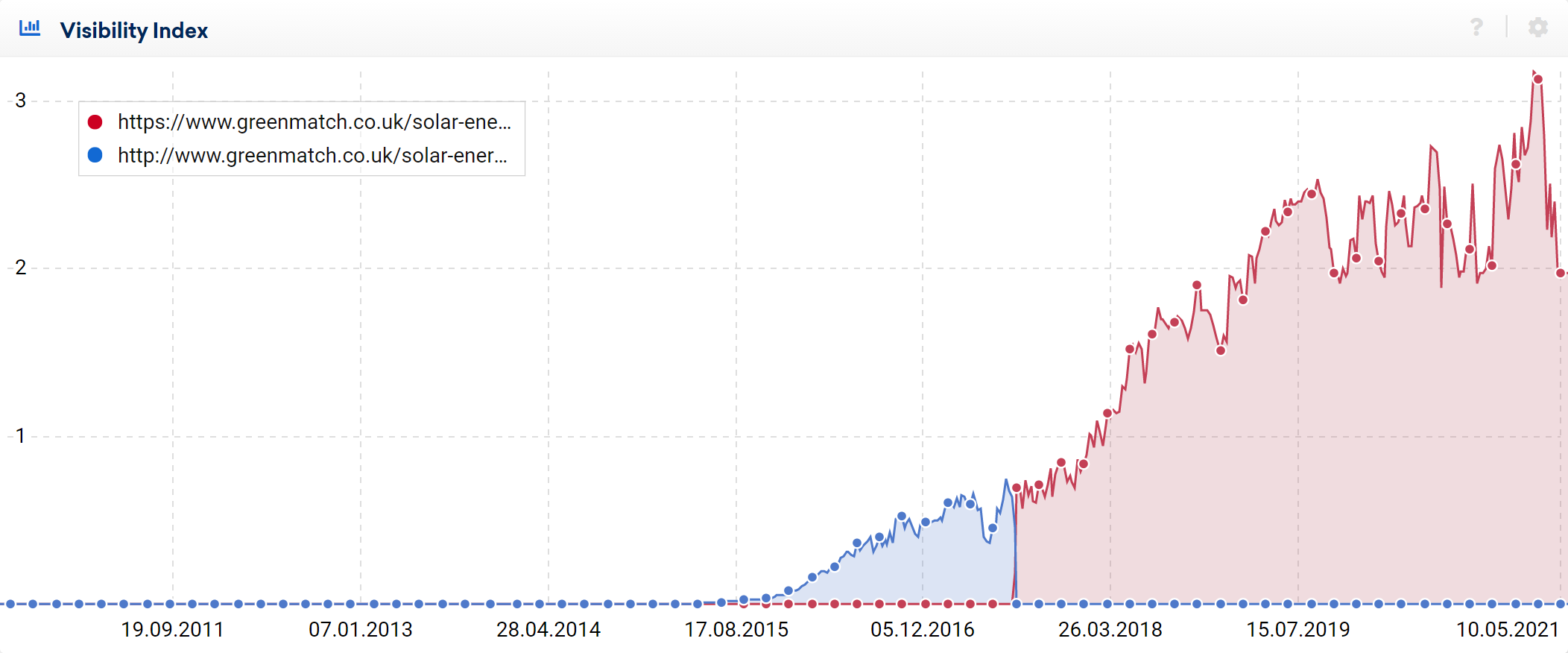
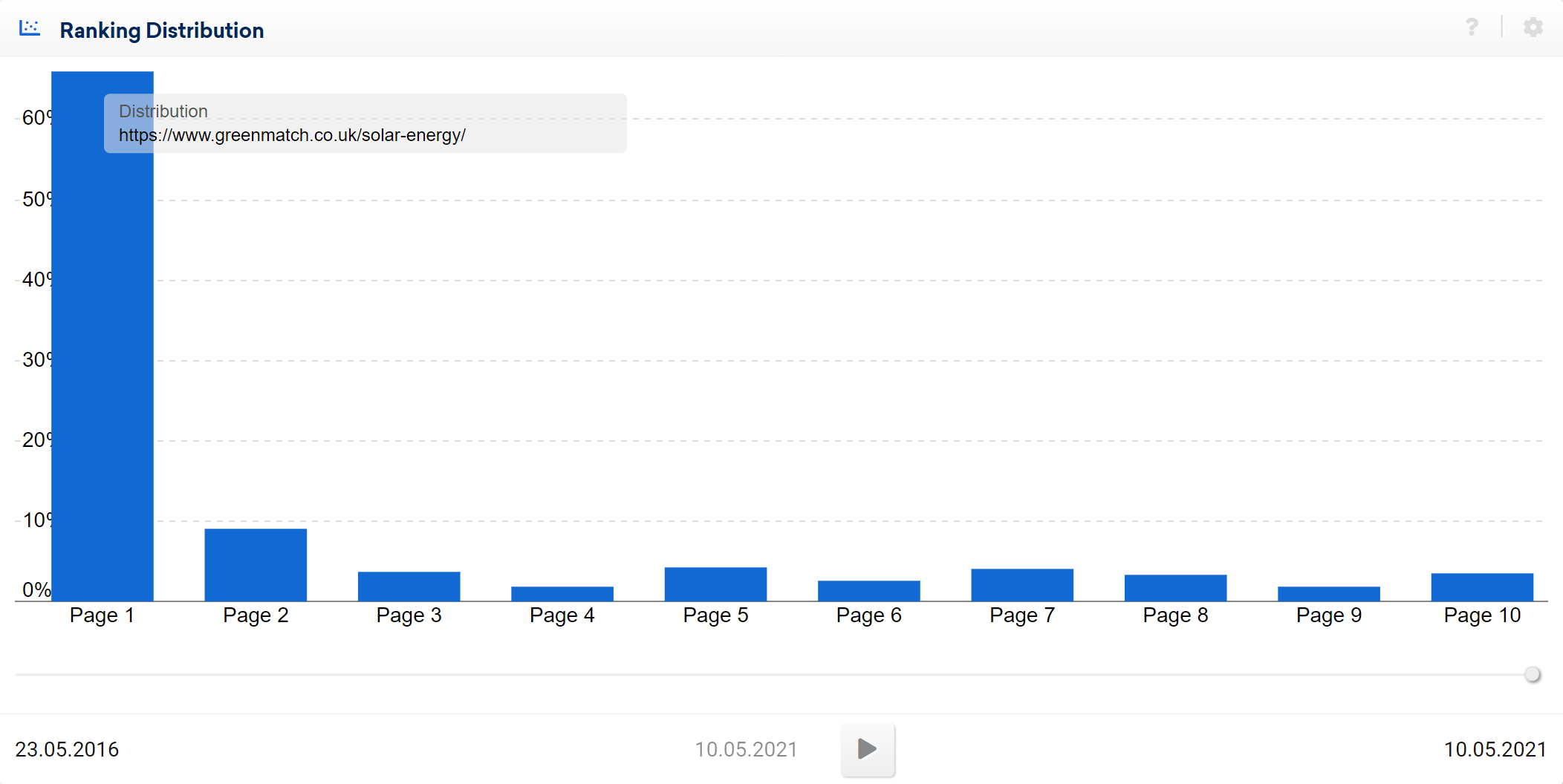
Example 2 – Jacksons fencing
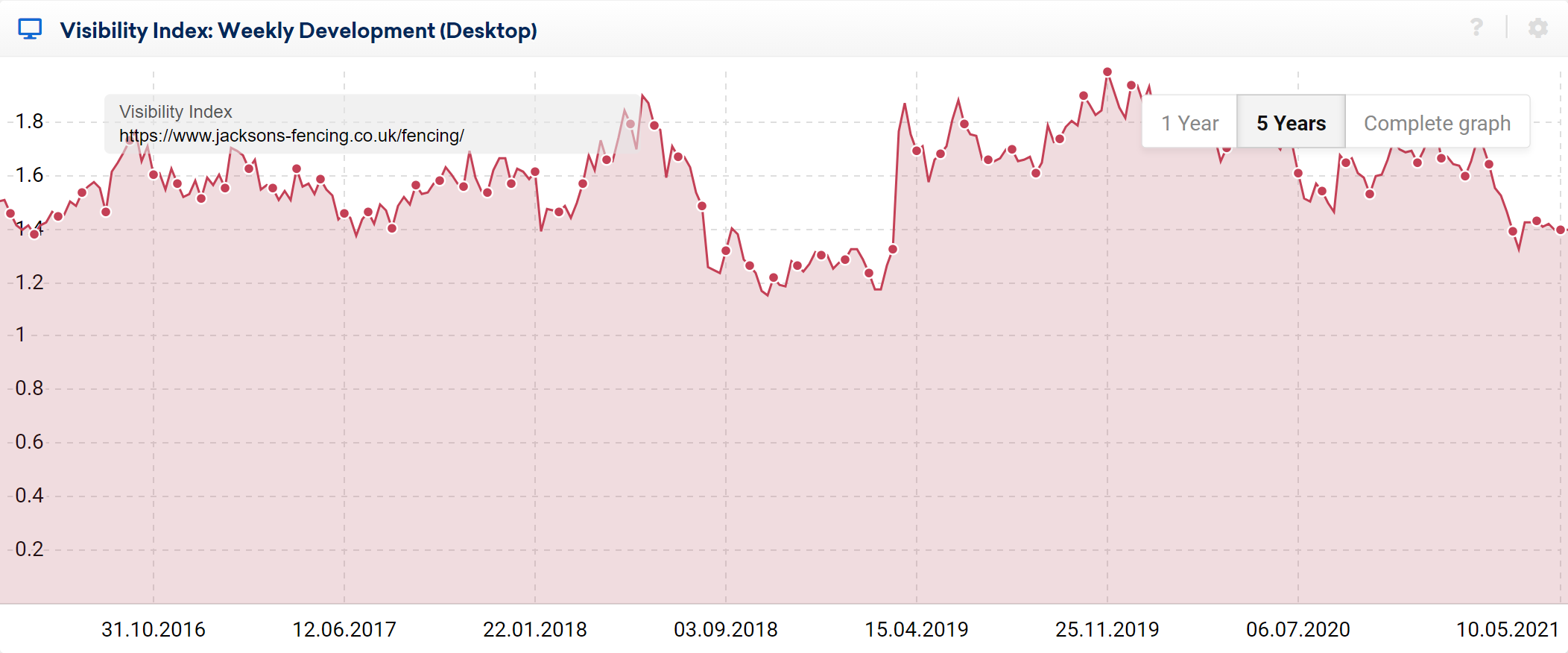
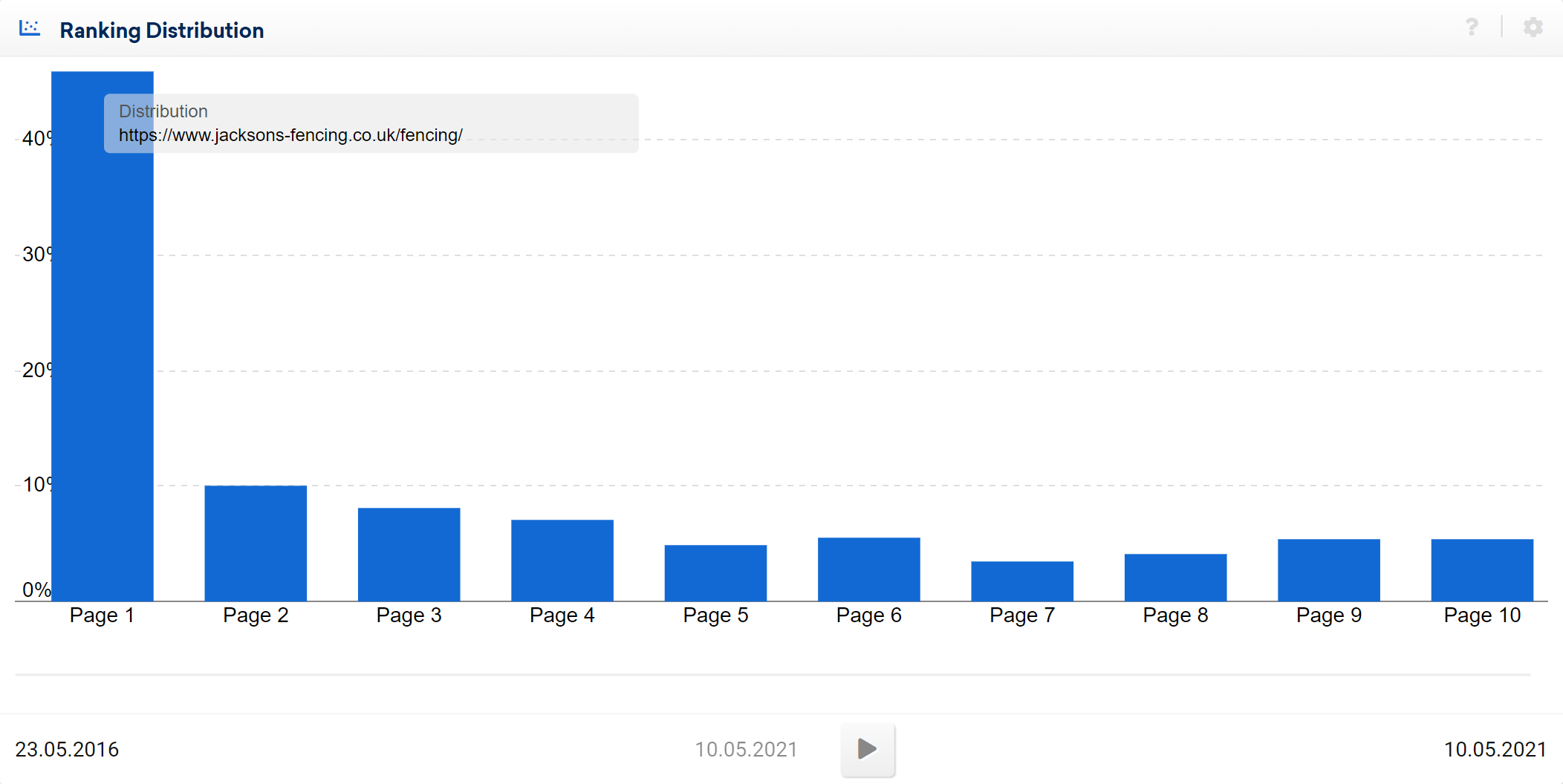
Additional HPCF examples
These ten, large site examples represent some of the best performing directories that exist in UK search results.
The intent reflects the nature of the content within the directory, but not necessarily the domain. For example, diy.com the domain for the multichannel DIY chain B&Q, proves that it’s possible to create a successful knowledge library on a commercial B2C retail website. The directory, with over 500 URLs, ranking for over 78000 keywords,
(Source data: 52,000 candidate URLs from many millions of domains that rank in UK search.)
| Path | Ratio | Intent | URLs Top 10 | URLs Top 100 | Path VI | SISTRIX DATA |
|---|---|---|---|---|---|---|
| https://www.healthline.com/nutrition/ | 47.33% | Know | 5379 | 5519 | 88.003 | To SISTRIX |
| https://www.coachmag.co.uk/workouts/ | 46.92% | Know | 50 | 91 | 0.657 | To SISTRIX |
| https://www.runnersworld.com/races-places/ | 31.57% | Know | 177 | 555 | 0.107 | To SISTRIX |
| https://www.radiotimes.com/quizzes/ | 30.19% | Know | 75 | 89 | 0.649 | To SISTRIX |
| https://www.hellomagazine.com/profiles/ | 30.10% | Know | 682 | 1013 | 2.138 | To SISTRIX |
| https://www.squaremeal.co.uk/restaurants/ | 30.03% | Know | 21157 | 48190 | 2.590 | To SISTRIX |
| https://www.visitlondon.com/traveller-information/ | 29.43% | Know | 296 | 774 | 1.818 | To SISTRIX |
| https://www.diy.com/ideas-advice/ | 27.89% | Know | 496 | 560 | 3.994 | To SISTRIX |
| https://www.furniturevillage.co.uk/sofas-and-armchairs/ | 47.14% | Do | 401 | 507 | 2.684 | To SISTRIX |
| https://food-to-order.sainsburys.co.uk/category/ | 47.11% | Do | 38 | 44 | 0.333 | To SISTRIX |
| https://m.jdsports.co.uk/collection/ | 46.92% | Do | 164 | 233 | 2.103 | To SISTRIX |
| https://www.next.co.uk/men/ | 46.70% | Do | 13 | 22 | 0.155 | To SISTRIX |
| https://www.gooutdoors.co.uk/climbing/ | 45.45% | Do | 111 | 179 | 0.683 | To SISTRIX |
| https://www.hobbycraft.co.uk/papercraft/ | 40.47% | Do | 93 | 114 | 2.838 | To SISTRIX |
| https://ao.com/best/ | 40.44% | Do | 87 | 100 | 0.140 | To SISTRIX |
How can I use high-performance content formats for my daily SEO work?
User signals vary greatly depending on the content format. They have become too important for us to simply lump an entire domain together.
Therefore, start thinking in terms of content formats. Don’t just analyse domains as a whole. Make sure to analyse them at the format level. In most cases, this means conducting a directory-level analysis. The success of the whole domain is the result of the individual formats that make it up. Only at the format level do the strengths and weaknesses become visible. Those who do not analyse at the format level are optimising blindly. Without formats, there is no focus.
In the next articles in this content marketing series, I will present a system that can be used to evaluate and optimise content formats.
Start now with an inventory of the existing content formats. What does their ranking distribution look like? Classify the formats according to HPCF, MPCF and LPCF.
In order to evaluate the ranking distribution of a format in a meaningful way, it should have rankings in the top 100 for at least 100 different keywords. The evaluation can be supplemented with further key figures such as number of keywords, visibility index, links, etc. For sistrix.de, such a classification into HPCF, MPCF and LPCF would look as follows.
If a domain already has a HPCF, don’t waste your time and focus your SEO work on these formats. Optimise them further and scale them with additional content and keywords. Think about building more HPCFs.
If the domain does not yet have an HPCF, consider converting some of the existing formats to a HPCF. Analyse the HPCFs of competitors and other successful websites to find out what makes these formats successful. Start building HPCFs, either as completely new formats or from existing formats whose weaknesses you have identified and can eliminate. The system for evaluating content formats in the next articles will help you to discover these strengths and weaknesses.
Does your website not have any real formats but only consists of a number of different individual pages? Then you have probably just found the answer as to why the domain has not built up much visibility and does not scale from an SEO point of view. Start finding HPCFs from competitors. Analyse their success and start building your own HPCFs.